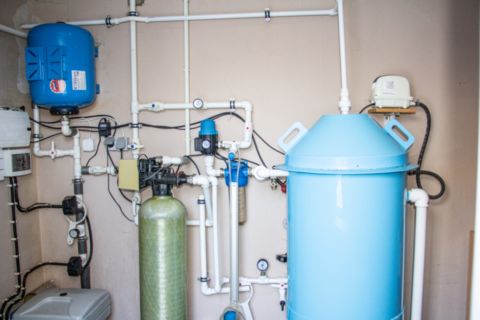SUSU scientists compared well-known brands of modern coagulants for water purification and came to a conclusion that in order to increase the effectiveness of chemicals, water can be pre-turbidified with carbon powder.
No matter how much they talk about innovative "reagent-free" water purification methods, nothing more effective than coagulants has been invented yet. Scientists and industrialists continue to search for their optimal composition.
If a coagulant is already being produced on an industrial scale, this does not mean that science has lost interest in it. Scientists continue to experiment with the already known brands to evaluate their effectiveness, safety, and who knows…to reveal new secrets of their effective use.
Associate Professor of the Department of Urban Development, Engineering Networks and Systems at the SUSU Institute of Architecture and Construction, Candidate of Sciences (Engineering) Elena Nikolaenko and Master's degree student Tingrui Zhang published an article in the first issue of the Water Supply and Sanitary Technique journal for 2025, in which they compared the effectiveness of aluminium oxychlorides (OXA) of various brands.
First of all, the scientists created “model water”, the composition of which corresponds to natural water at different seasons of the year.
Permanganate oxidizability has become the criterion for water purity. This term denotes a complex, composite characteristic that shows the purity of water from impurities: bacteria, plant organics, metals, and other foreign substances. Of course, there are other methods for assessing clean water (bichromate, iodate oxidizability), but permanganate is the most well-known one.
For the experiment, the scientists took samples of well-known brands of coagulants OXA: MetaPAC-20, BOPAC-E-3, BOPAC-E-2 and BOPAC-A.
All of them showed good results in permanganate oxidizability. Before the experiment, it equalled 10 to 8.7 mg/l, and after treatment with OXA, it varied from 3.9 to 2.2 mg/l. The maximum permissible concentration for drinking water is 5 mg/l, so before purification it was in an improper condition, and after treatment it became safe for consumption.
However, this indicator is not the only one that is important for the consumers of drinking water. Turbidity and colour of the tap water play a much greater role. Alas, not all of the coagulants considered were effective in this regard.
A well-known method for improving the performance of coagulants for slightly turbid coloured water is the use of opacifiers, such as powdered activated carbon.
There is good news: it has turned out that preliminary carbonization (turbidity with carbon) of water increases the efficiency of OXA. MetaPAC-20 coped with the task most consistently. But even when adding BOPAC brand coagulants in the calculated dose, turbidity and colour were significantly reduced. But exceeding this dose did not lead to any changes.
The issue of the efficiency of water purification with coagulants concerns any source − from industrial scale to individual wells.
"The quality of water supplied to the consumer will depend on how correctly the brand and dose of the reagent are selected in these specific conditions," says Elena Nikolaenko, Associate Professor at the SUSU Institute of Engineering and Construction. "Our studies of aluminium oxychlorides have shown that, firstly, the nature of pollution in natural water affects the efficiency of OXA, and secondly, preliminary turbidity of water allows for a significant reduction in the dose of coagulant when treating slightly turbid coloured water."




